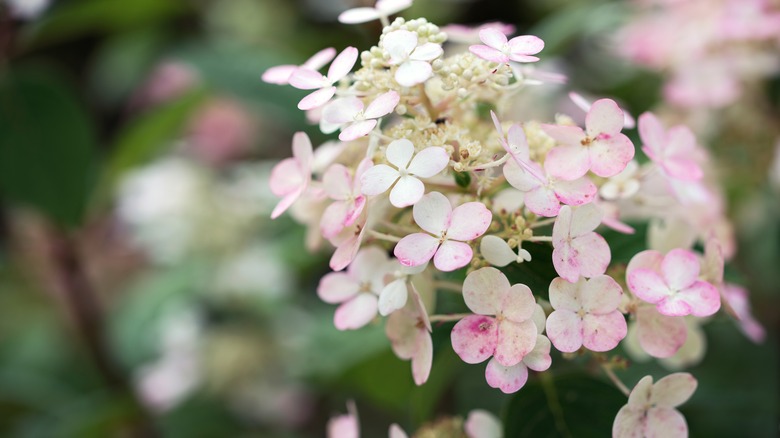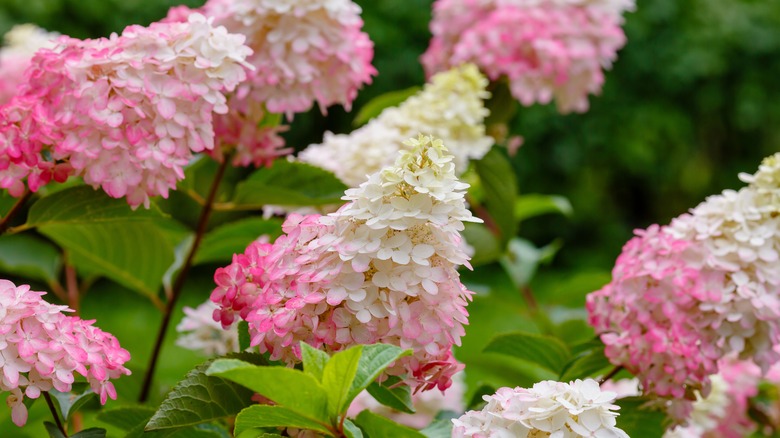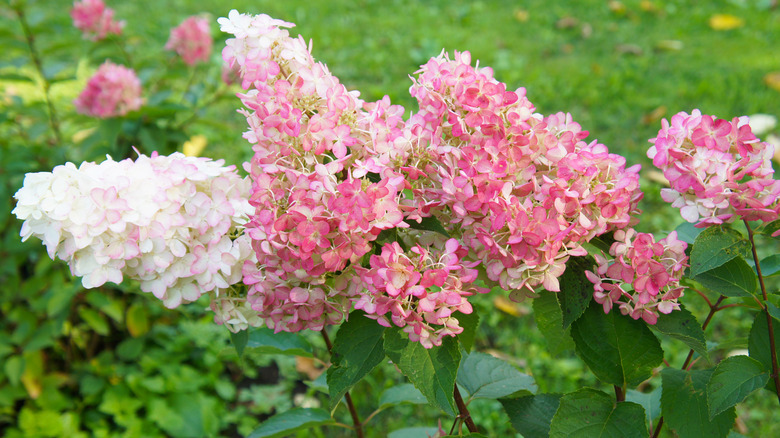Why Your Quick Fire Hydrangea Is Not Turning Pink
The quick fire hydrangea is a pink variety of hydrangea plant, with flowers that bloom earlier than other varieties, transforming from white to a hot pink or deep burgundy red. The beautiful color transition is probably what attracted you to this plant in the first place, so you may be wondering why yours didn't change color. The color comes with maturity, but it isn't guaranteed if the growing conditions haven't been quite right. For example, the plant can be planted in full sun or part shade, but if it doesn't get all the light it needs, the blooms may not turn fully pink.
There are other reasons your quick fire hydrangea might not be transitioning into the colors you expect. For example, it may need more watering, or perhaps you are overdoing it with your watering or fertilization frequency. The type of soil your hydrangea plant is growing in also plays a part in its performance, and there are a few different things you can do to improve the soil to better suit your plant.
How much light quick fire hydrangeas need for fully pink blooms
The quick fire hydrangea is said to do well when it receives a balance of both full sun and part shade from its position in your garden. For optimal conditions, the plant should get at least six hours of full sun, plus four to six hours of partial sun, and up to four hours of full shade. You may think that your quick fire hydrangea is planted in a spot in your garden where it has access to this amount of light throughout the day, but have you taken into consideration the other plants located around it?
For example, if you have shrubs or bigger bushes and trees close by, they may end up blocking out some of the light at different times of the day. But don't worry, this doesn't necessarily mean you have to think about replanning your whole garden and disturbing your plants by digging them up and replanting them elsewhere. The solution could be as straightforward as pruning neighboring trees or bushes that are in the way to increase the amount of sun exposure your hydrangeas get.
As well as light, temperature can have an impact on your plant. For example, if overnight temperatures are unusually high, this can also lead to the blooms not aging correctly and transitioning from white to their matured pink and red colored blossoms. There may not be much to be done about this, but it's still something to consider while trying to work out what could be going wrong with your plant.
Other reasons quick fire hydrangeas won't turn pink
At the polar end of the spectrum, your quick fire hydrangea could actually be receiving too much sun. This may result in your plant experiencing high levels of stress caused by drought conditions instead. If you notice your hydrangeas are drooping it may be that they need more water to compensate for the over-exposure of sun drying them out. Too much sun and not enough watering will cause heavy flower heads to wilt, with branches bending so much that they may even be touching the ground, which is a good sign to watch out for. Talking about overkill — feeding too much fertilizer can lead to similar symptoms, so try not to get mixed up.
It is said that pink and red hydrangeas do better in higher pH soil that is more alkaline than acidic. You could try a few different things to help lower the acidity of your soil where the quick fire hydrangea is growing. For example, top the soil with a light layer of wood ash or limestone to lower the aluminum and acid levels in the ground. You can work it into the soil with a hoe or tiller. However, other sources say that the color of quick fire hydrangeas isn't affected by the pH of the soil, so this might be a bit hit or miss.


